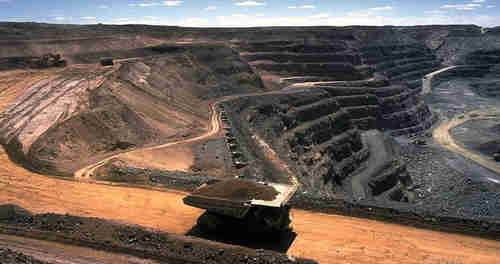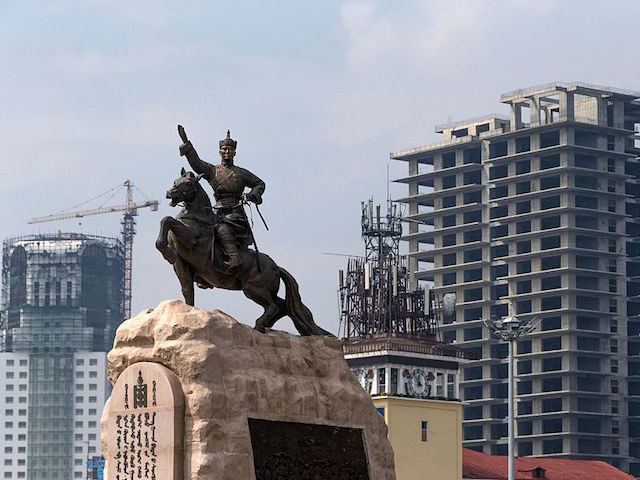This morning’s key headlines from GenerationalDynamics.com
- Mongolia in economic crisis asks the IMF for a bailout
- Mongolia signs new mining deal with Rio Tinto for future growth
Mongolia in economic crisis asks the IMF for a bailout

Mongolia’s Oyu Tolgoi open-pit copper mine in South Gobi desert
Mongolia is another story of wild spending when the times are good, resulting in huge debts when times are bad.
In 2011, Mongolia borrowed billions of dollars to invest in huge road and infrastructure projects. Now the country owes some $2 billion in public and private debt repayments in 2017 and early 2018, and is seeking a bailout from the International Monetary Fund. The country’s tugrik currency has been falling sharply – more than 10% this year, causing the central bank to raise interest rates by 4.5% to 15%. (America’s current Federal funds rate is between 0.25% and 0.5%. The eurozone, Denmark, Sweden, Switzerland and Japan, have negative interest rates in some cases.)
The reason that Mongolia’s economy appeared invincible in 2011 is because the country has huge reserves of copper, coal and gold. So far this year, the country has grown by 1.4%, down from 3% last year. But in 2011, the economy grew by an astronomical 17.5%, mainly thanks to foreign investments.
Mongolia’s economy has suffered for two reasons. First, China has been Mongolia’s major market for its copper, coal and gold, but China’s economy has been slowing down, and so China has been importing less of these products than previously.
The second reason is the fall in commodity prices. The sharp plunge in the last two years of the price of oil has harmed in economies in countries including Russia, Saudi Arabia and Venezuela. Other commodities have fallen as well. In 2011, the price of copper was about $4.50 per pound; today it’s around $2 per pound.
In August, the finance minister said the economy is in crisis and the government pitched a series of austerity measures and taxes that were later overturned by parliament. The government is now drafting an “Economic Stabilization Plan” which it hopes will restore its economy to stability. However, Generational Dynamics has been predicting for years that the existing global deflationary spiral would continue, and Mongolia will continue to be a part of that. Bloomberg and IntelliNews and CNN (23-Aug)
Mongolia signs new mining deal with Rio Tinto for future growth
Mongolia hopes to recover from its economic growth by taking advantage of its rich natural resources. In May of this year, Mongolia signed a contract with Australian mining giant Rio Tinto to invest $5.3 billion in the development of the Oyu Tolgoi underground copper and gold mine.
There’s an existing Oyu Tolgoi open pit mine, which has been producing copper since 2013. The underground mine is expected to produce a considerably higher grade of copper.
The mine will work 365 days a year, with two 12-hour shifts. At the peak of construction, the underground workforce is expected to be more than 3,000 people, 95% of them Mongolian workers. First production from the underground mine is expected in 2020, with the mine producing at full capacity by around 2030.
However, 2030 is a long way off, and Mongolia has to make debt repayments now. Mining.com and Reuters and Rio Tinto
Related Articles
- China’s yuan devaluation causes currency chaos in Asia (20-Aug-2015)
- Mongolia’s natural resource riches lost to corruption and foreigners (08-Aug-2013)
KEYS: Generational Dynamics, Mongolia, Oyu Tolgo, copper, gold, coal
Permanent web link to this article
Receive daily World View columns by e-mail

COMMENTS
Please let us know if you're having issues with commenting.